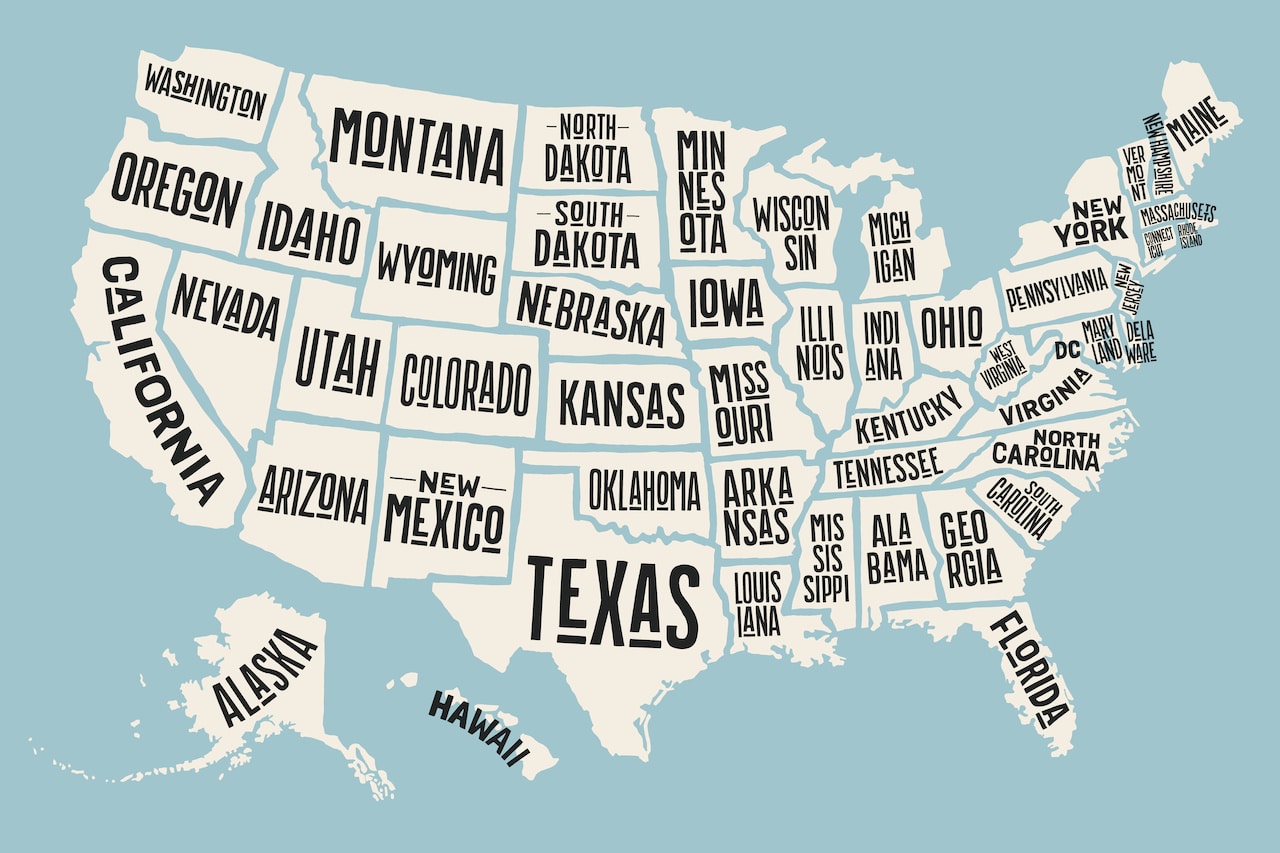A Credit Sesame analysis found huge differences in the ten best and worst states for job seekers in the United States in 2023.
When businesses opened up after the pandemic shutdowns, employers went on a hiring binge. More recently, we may have started to see the hangover from that binge. In 2023 unemployment remains low overall, but there are trouble spots resulting in a steady stream of high-profile layoff announcements.
Huge differences in job markets
In early 2023, the national unemployment rate dipped down to 3.4%. That’s the lowest since 1969. Low unemployment generally means it is easy for workers to find jobs. However, the job market differs from one state to another.
Unemployment rates range from a low of 2.1% in North Dakota to 5.5% in Nevada. The number of New York job openings matches the number of job seekers. Whereas, South Dakota has more than three openings for every job seeker.
If you have no luck finding a good job in your local area, consider expanding your horizons. To help you decide where to go, Credit Sesame figured out which states are the best and worst states for job seekers in 2023.
What is a good market for job seekers?
There are several data points to consider when determining the quality of the job market for job seekers.
- Unemployment rate
- Rate of new job creation
- Number of job seekers
Independently, these may be good indicators of job prospects, but considering them together gives a fuller picture. These data were used to calculate:
- The ratio of job openings to job seekers in each state. That shows the employment demand in each state relative to the available labor pool.
- The percentage change in job openings over the most recent 12 months.
These numbers were then ranked from best to worst state (1 to 51). The average of the two ranking numbers for each state gives a score that ranks the best and worst states for job seekers based on the current level of demand and the recent changes in demand.
10 best and worst states for job seekers
10 best states
The overall state ranking takes into account the number of job openings per job seeker and the recent trend in job openings. It may seem that the state with the most job openings per job seeker should rank #1, but growth in job openings is also important. Here are the top ten states for job openings, growth in job openings and overall.
| State rank | Most job openings per seeker | Highest growth in job openings | Overall ranking |
| 1 | South Dakota | West Virginia | Georgia |
| 2 | Montana | Louisiana | Alabama |
| 3 | North Dakota | Arkansas | Louisiana |
| 4 | Nebraska | Oklahoma | South Dakota |
| 5 | Alabama | Washington | Oklahoma |
| 6 | Georgia | Giorgia | Arkansas |
| 7 | Utah | Mississippee | West Virginia |
| 8 | Wisconsin | Virginia | Vermont |
| 9 | District of Columbia | Massachusetts | District of Columbia |
| 10 | Missouri | Alabama | Florida |
1. Georgia
There are 2.7 job openings in Georgia for every person seeking work. That’s the sixth-highest ratio in the nation. Georgia also ranked sixth for growth in job openings over the past twelve months, with a 10.66% increase. Being strong in both areas earned Georgia the top ranking overall.
2. Alabama
With 2.77 openings per job-seeker, Alabama’s ratio was slightly better than Georgia’s. However, their growth in job openings over the past twelve months ranked tenth, at 7.28%.
3. Louisiana
The trend here is especially strong, with a 24.48% increase in the number of job openings over the past twelve months. That ranked second nationally. Louisiana’s ratio of 2.41 openings per job seeker ranked 14th.
4. South Dakota
This state has the best ratio of openings per job seeker, at 3.68. The only caution is that this hot job market may be poised to cool off a bit, as there was no growth in job openings over the past year.
5. Oklahoma
This was the fourth-best state in the growth of job openings, at 16.81%. The ratio of openings to job seekers is 2.36, which ranked a solid 15th.
6. Arkansas
Job openings in Arkansas increased by 17.39%, which ranked third nationally. The ratio of openings to job seekers was an 18th-ranked 2.32.
7. West Virginia
This was the number one state for growth in job openings, at 24.56%. If it can keep up that pace, West Virginia should improve its ratio of openings to job seekers, which ranked 21st at 2.30.
8. Vermont
The only northern state in the top ten, Vermont was 12th in ratio of openings to job seekers at 2.47, and 11th in growth rate of openings at 4.17%.
9. District of Columbia
The Capital District ranked 9th with a 2.6 ratio of openings to job seekers. The number of job openings was flat over the past year, but at least that’s better than the 34 states that saw a decline in openings.
10. Florida
The ratio of openings to job seekers is a 13th-ranked 2.47%. The number of openings grew just slightly, with a 0.28% increase that ranked 14th.
10 worst states
And here are the bottom ten states for job openings per job seeker, growth in job openings and overall.
| State rank | Least job openings per seeker | Lowest growth in job openings | Overall ranking |
| 42 | Arizona | Nebraska | Iowa |
| 43 | Illinois | Colorado | Pennsylvania |
| 44 | Delaware | Hawaii | Maine |
| 45 | Michigan | Iowa | Oregon |
| 46 | Washington | Minnesota | Indiana |
| 47 | Oregon | Michigan | Hawaii |
| 48 | Nevada | Indiana | California |
| 49 | California | Maine | Connecticut |
| 50 | Connecticut | New York | Michigan |
| 51 | New York | North Dakota | New York |
42. Iowa.
Though Iowa’s 2.03 ratio of openings to job seekers was only a little below the median, its 15.45% decline in job openings is troubling.
43. Pennsylvania
The ratio of openings to job seekers ranked 40th at 1.65, and the number of openings declined by 8.1%.
44. Maine
The 2.13 ratio of openings to job seekers was around the middle of the pack, but Maine had the third biggest decline in openings at 22.22%.
45. Oregon.
This state ranked 47th with a 1.33 ratio of openings per job seeker, and the number of openings declined by 7.28%.
46. Indiana
This state had a 19.84% decline in the number of job openings – fourth worst nationally. That didn’t help its 1.94 ratio of openings per job seeker, which ranked 32nd.
47. Hawaii
The 1.66 ratio of job openings per job seeker ranked 39th, and the number of openings declined by 14.58%.
48. California
With just 1.3 job openings per job seeker, California ranked 49th. An 8.01% drop in the number of openings only makes things worse.
49. Connecticut
This state’s 1.29 ratio of openings per job seeker is better only than neighboring New York’s. With a 10.19% decrease in the number of openings over the past twelve months, that ratio doesn’t look likely to improve.
50. Michigan
The 1.39 ratio of openings to job seekers ranked 45th, and the 18.49% decline in the number of job openings was the fifth worst.
51. New York
This state has the worst ratio of openings per job seeker, at 1.12. That doesn’t look likely to get any better, because the number of openings declined by 23.52%, the second-worst rate of decrease in the nation.
Thinking of moving state?
You can improve your job prospects by moving state. However, before you pack your bags and relocate to a state with a stronger job market, consider the following:
- Skills match-up. What kind of workers are in demand in the state? If your skill set does not match those in demand, relocating may not be a wise move.
- Cost of living. This varies considerably from state to state. Beware of getting a 10% pay raise in a state with a 25% higher cost of living.
- Personal preferences. Work is important, but so are things like climate, cultural offerings, politics, and closeness to family. Deciding to move based solely on career prospects may not get the happy result you hope for.
If you enjoyed Ten best and worst states for job seekers in 2023 you make like,
Disclaimer: The article and information provided here is for informational purposes only and is not intended as a substitute for professional advice.




















